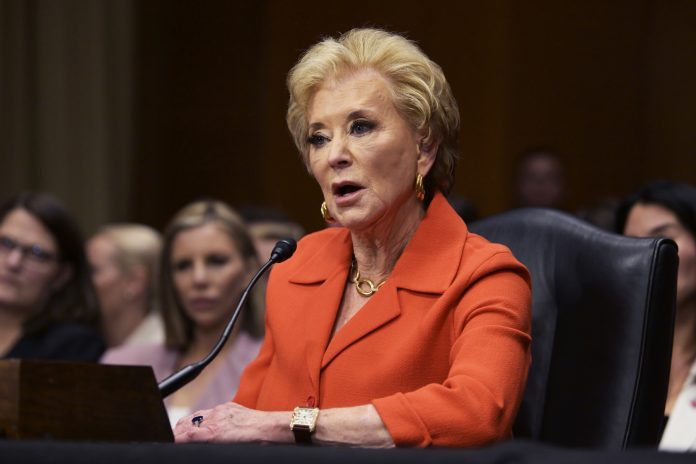- A federal judge halted the Trump administration’s attempt to lay off over half of the Department of Education’s workforce, citing an unlawful effort to dismantle the agency.
- The court ordered the reinstatement of more than 2,100 terminated staff and blocked plans to transfer departmental functions to other agencies.
- The ruling follows lawsuits by 21 states, school districts, and educators, alleging the cuts would cripple federal education services.
In a sweeping rebuke of the Trump administration’s approach to federal education policy, U.S. District Judge Myong Joun on Thursday blocked the administration from firing more than 2,100 employees at the U.S. Department of Education.
The ruling prevents implementation of a March executive order that sought to close the department by slashing its staff by over 50 percent and transferring key responsibilities elsewhere.
Joun, a Biden appointee in Massachusetts, concluded that the layoffs were not a legitimate reorganization but a deliberate attempt to dismantle a federal agency without congressional consent. “The record abundantly reveals that Defendants’ true intention is to effectively dismantle the Department without an authorizing statute,” Joun wrote in an 88-page opinion (PDF File).
The court ordered the reinstatement of the fired workers and prohibited further moves to transfer departmental duties to other agencies such as the Small Business Administration and the Department of Health and Human Services.
Mass Layoffs Tied To Executive Order
On March 11, the administration announced a reduction-in-force order that would terminate over half of the Education department’s 4,133 staff.
Two days later, President Trump issued an executive order instructing the Secretary of Education to “take all necessary steps to facilitate the closure of the Department of Education.” A day after that, he publicly stated that student loan servicing would be transferred to the SBA, and special education functions would shift to HHS.
The layoffs impacted all major offices, including those that manage civil rights investigations, Federal Student Aid, and grant funding. Internal documents and public statements showed little evidence that the cuts were about efficiency, as claimed.
Instead, Judge Joun noted, “Plaintiffs painted a stark picture of the irreparable harm that will result… from financial uncertainty and delay, impeded access to vital knowledge on which students and educators rely, and loss of essential services for America’s most vulnerable student populations.”
Lawsuits Focus On Impact To Congressionally-Mandated Activities
Two lawsuits, one led by 21 Democratic attorneys general and another filed by school districts and labor unions, prompted the court’s intervention. The plaintiffs argued that the layoffs had compromised the federal government’s ability to distribute aid, enforce civil rights, and oversee student loan programs. These programs are legally required by Congress, and only Congress has the power to shut them down.
According to court filings, the Office for Civil Rights shut down seven of its twelve regional offices. The Office of Federal Student Aid, responsible for overseeing billions in loans and grants, saw many staff terminated, including entire teams managing FAFSA processing and loan servicing oversight.
States and school districts reported delays in federal funds, difficulties accessing compliance systems, and major disruptions in planning for the 2025–26 school year. In Massachusetts, officials testified that summer school, special education, and staffing decisions were thrown into chaos.
What Happens Next
While the ruling restores Department of Education staffing levels for now, the administration has already signaled plans to appeal. It’s also unclear if the Department will actually be able to get laid off workers back. It’s been two months since the layoffs occurred, and many may have already found other employment.
Judge Joun’s preliminary injunction, however, prevents any further moves to carry out the executive order until the lawsuit is resolved. The decision is likely to be appealed to the Supreme Court in the ongoing clash between the executive and legislative branches over the structure and function of federal agencies.
Whether Congress will act to change or eliminate the department remains a separate question, one that, for now, must go through traditional legislative channels.
Don’t Miss These Other Stories:
Student Loan Servicers Prioritize IDR Apps To Clear Cases
“No Tax On Tips” Bill Clears Senate With Zero Opposition
House Renames MAGA Account To Trump Account
Create your very own Auto Publish News/Blog Site and Earn Passive Income in Just 4 Easy Steps







